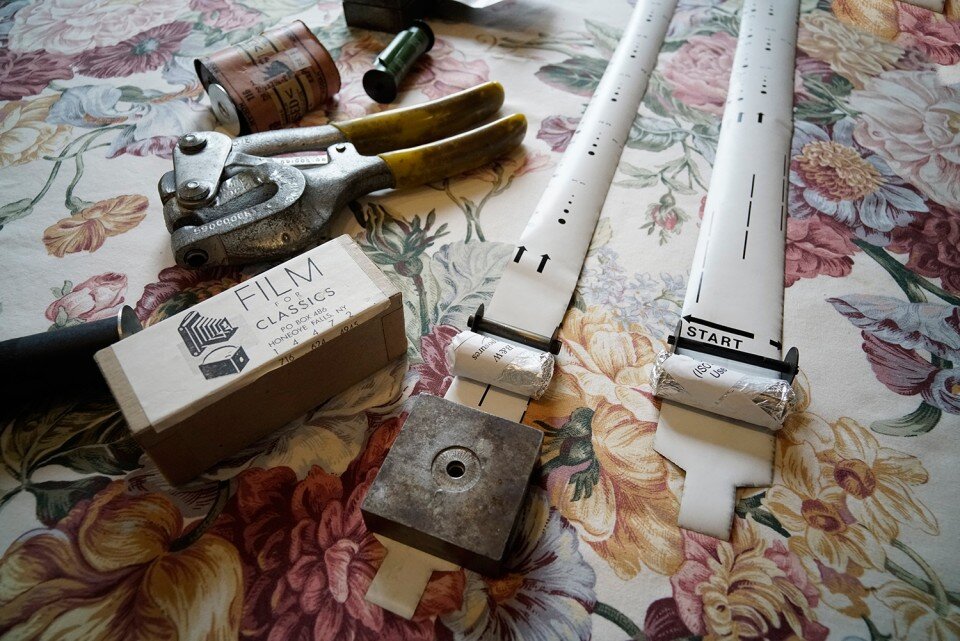This series focuses on those who take the making of pictures a step or two further, creating their own photographic tools.
Tools used for re-spooling roll film that has been trimmed to fit onto film spools intended for use with long-discontinued film sizes. Photo by Allan Weitz for B&H Photo
Dick Haviland, Honeoye, NY
In 1987, the Photographic Historical Society in Rochester, New York encouraged its members to begin a photography project in celebration of Kodak’s 100th anniversary. Photography enthusiast Dick Haviland accepted the challenge, producing discontinued film formats including 127, 616, 116, 828, 620, and 122. The project evolved into his company, Film for Classics which is now housed in a former saw mill in Honeoye, about 20 minutes outside of Rochester. In the beginning, Haviland sold the film to photographers directly but as demand grew, he limited his sales to established dealers, the largest of which is B&H in New York City.
In the darkroom, Haviland cuts down large rolls of film ranging from 46mm to 5-inches-wide to fit the respective film types. It is then matched to a precut paper backing Haviland had persuaded Kodak to sell him rolls of year ago. Once affixed the backing paper, the film is wound onto a film spool, and wrapped in foil. After many years of practice, Haviland can cut, spool, and label 10 to 15 rolls of film per hour, depending on the format.
As the raw materials become scarcer with each passing year, Haviland finds that continuing his business becomes more difficult. Kodak has ceased production of backing paper, and has substantially decreased production of film spools, forcing Haviland to invest in an injection-mold machine to make his own plastic film spools. He accommodates special requests when possible, finding his customers often have nostalgic reasons for wanting the film. Today, Film for Classics produces 620, 127, 828, 116, and 122 spool film.
View more of Haviland’s work on his website.
Have you made or modified your own photographic equipment? Let us know at info@donttakepictures.com


